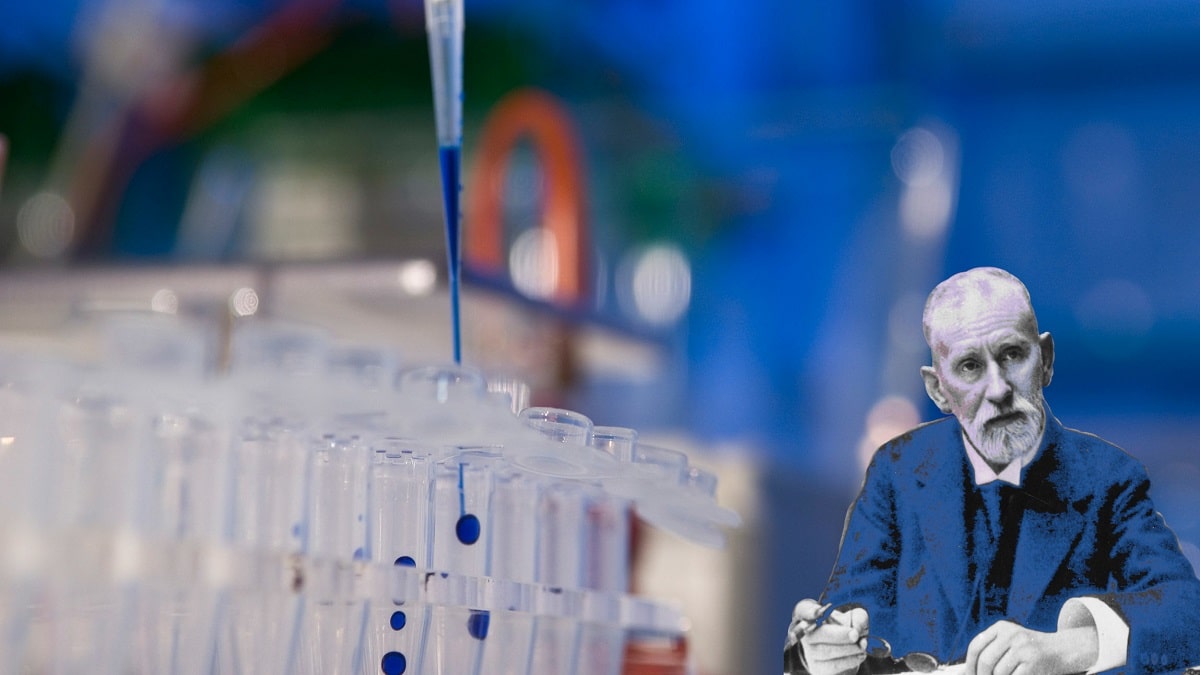Paul Ehrlich was a tremendous scientist. In 2001, members of the Nobel Foundation reviewed Nobel Prize winners to decide which one had brought the greatest benefit to humanity in the last century. Rolf Luft, the former chairman of the medicine and physiology award committee and the most senior member of the Nobel committee, placed Paul Ehrlich (1854–1915) at the top of the list, especially because of his creativity as a theorist. Ehrlich’s conceptual and practical contributions to the field of science were so great that it was a dilemma to show only one of them on the list. All these contributions prove his genius and talent. Here is a list of his unusual ideas:
Paul Ehrlich and his contributions to science
- To put forward the concept and the term “Magic Bullets.”
- Conceptualization of “cell membrane receptors.”
- Finding the first syphilis treatment.
- Laying the foundations of immunology.
- Coined the term chemotherapy.
- Establishing hematology (blood science).
- Treatment of diphtheria using antitoxins.
He was a man of ideas, a great theorist rather than a great experimenter.
At the beginning of the 20th century, there were only a few chemical drugs that effectively cured diseases. Aspirin and morphine were painkillers, and it was always known that foxglove strengthened the heart muscles; amyl nitrate provided relief by dilating coronary vessels during heart spasms. Colchicine was used in the treatment of acute gout; iron was known to provide strength to the body; cassia was used to treat diseases; quinine was used to treat malaria; and mercury was used to treat syphilis and hair loss.
All of these treatments were derived from herbal remedies. There were many medicines prescribed by physicians, but most of these medicines had no real cure.

The theory of microbes is used to create immunity to diseases (by increasing antibodies in the body with microorganisms that do not harm the human body). This move resulted in true therapeutic drugs and brought the science of treatment to the point where it is today. Paul Ehrlich was the first person to start this change because of his knowledge of bacteriology and immunology and his close ties to the German chemical industry.
All of Paul Ehrlich’s contributions to science were based on the concept of “selective toxicity,” in which chemical structures permit dissimilar biological activities. He was surprised by the specificity of antigen-antibody reactions and the selectivity of tissues stained with methylene blue and other aniline dyes. He was convinced that the certainty of biological activity was closely related to the chemical structure; what convinced him was that a molecule, like the key sitting in the hole, had receptor areas on the stained cell membrane. He did conceptual studies to figure out what these areas were, looking for targets in pathogenic microbes and making “Magic Bullets,” which are chemicals that kill the microbes without hurting people.
Treatment of Syphilis
While working on syphilis, he found that the arsenic compounds used to destroy the syphilis-causing organism treponema pallidum were both highly toxic and ineffective. He used chemotherapy to synthesize and test over 600 arsenic atoms to find the one with the best anti-treponemal activity. The number 606 showed strong activity against this organism, and he called this arsenic composition “salvarsan.” The drug was modified and renamed “neosalvarsan” and later “neoarsphenamine.” Despite being extremely toxic and requiring injection, it was the first effective syphilis treatment until 1910.
Neosalvarsan, although not a drug that has the effect of magic bullets, is considered a beginning in this field. In 1927, employees of IG Farben, a powerful cartel in the German chemical industry, discovered that prontosil red, one of the azo dyes used in fabric dyeing, treated rats that had streptococci (I.G. Farben was also the company that produced toxic Zyklon B gas, used in Nazi concentration camps).
Research conducted at the Pasteur Institute has confirmed this finding, and it has been found that the prontosil sulfonamide stops the growth of organisms, although it does not eliminate streptococci. This bacteriostatic activity alerts the patient’s immune system, allowing the body to get rid of the bacteria. Thus, a “miracle drug” was found that detected and destroyed the target bacteria without damaging normal cells, just like the magic bullets from the “first chemical synthetic drugs.” In addition to its antibacterial effects, Prontosil is also characterized by the fact that it was synthesized in 1907 and no one owns the patent, making it accessible everywhere.
Quotes
“Success in research needs four Gs: Glück, Geduld, Geschick und Geld. Luck, patience, skill and money.”
“The first rule of intelligent tinkering is to save all the parts.”
“The cell concept… is the axis around which the whole of the modern science of life revolves.”
Sources:


